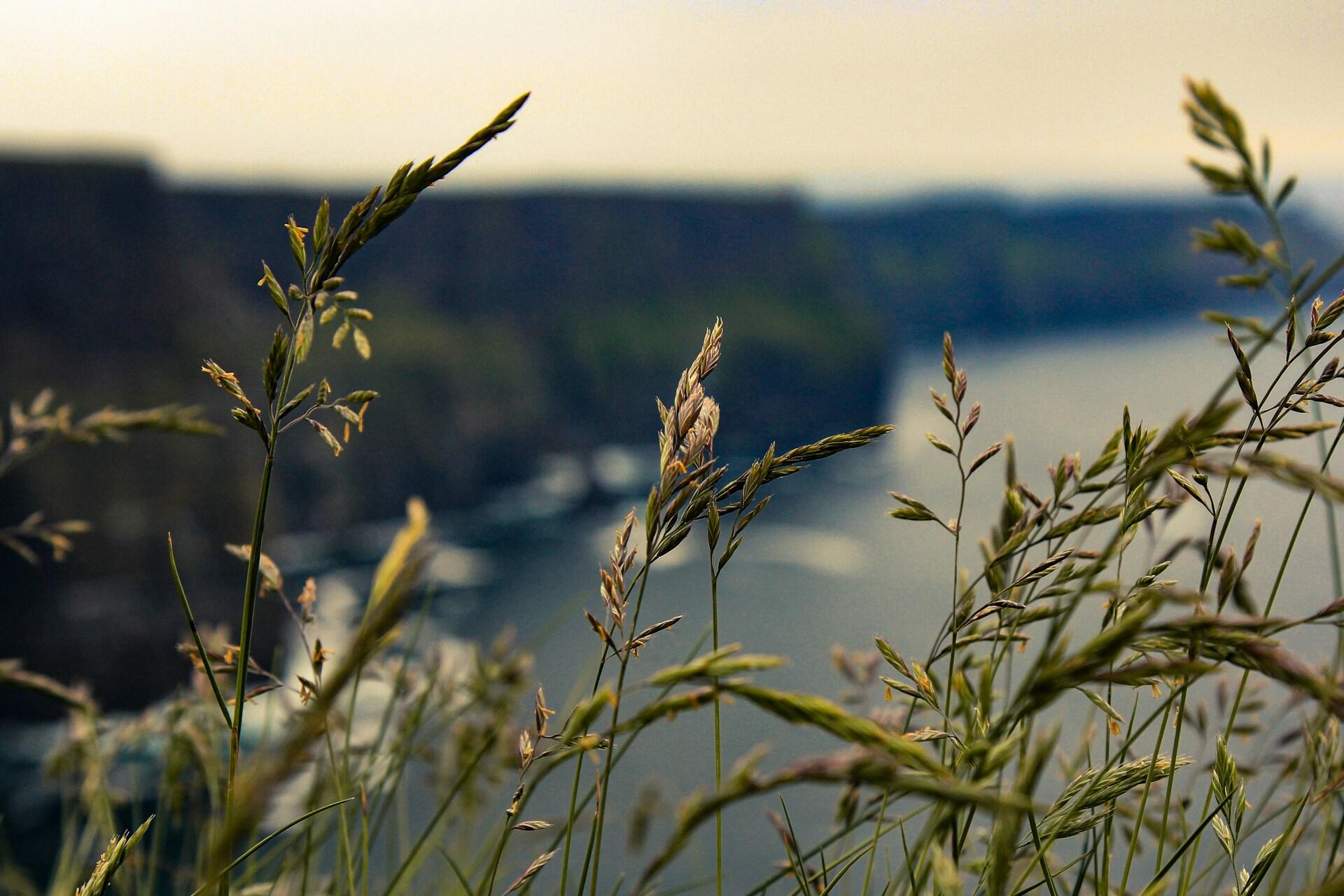Celtic symbols are loved for their intricate designs, rich history, and spiritual meanings. Rooted in the ancient traditions of the Celts, these are far more than decorative art. They symbolise life, love, and the eternal connection between nature and the human spirit.
For centuries, these symbols have represented Celtic culture across Ireland, Scotland, and Wales. Every Celtic symbol has its own story, from ancient stone carvings to modern jewellery.
Here, we'll delve into the world of Celtic symbols, exploring the meaning behind each design, where life and art become inseparable.

The Rich History and Cultural Significance of Celtic Symbols
The art and design of the Celts continue to influence modern culture. The symbols we'll be looking at are more than just for decoration; they're a language that represents the essence of life, nature, and the spiritual world and the mythical creatures that dwell within.

From an intricate Celtic knot (which signifies eternal life and interconnection) to the Tree of Life, every design carries important meanings that still resonate with the people of Ireland, Scotland, and Wales today.
Throughout history, trade, migration, and oral storytelling allowed Irish, Scottish, and Welsh myths to influence one another, shaping Celtic folklore.
In the past, many of these symbols were engraved on stone, woven into textiles, or incorporated into everyday objects. The Celts believed these symbols held spiritual significance and conveyed strong messages of love and unity.
These symbols evolved and are often found today in art, tattoos, jewellery, or clothing.
12 Iconic Celtic Symbols and Their Meanings
There are many different Celtic symbols, but here, we've chosen a dozen that we think are some of the most recognisable and important.
The Celtic Knot – An Endless Emblem of Unity and Eternity
The Celtic Knot is easily one of the most recognisable Celtic symbols. It features interwoven loops with no clear beginning or end. These loops represent eternal life, continuity, and the interconnectedness of all things.
This is an ancient design used by the Celts to signify unity and everlasting love. It is a powerful emblem that's still used today.
Design
Intricate, interlaced loops with no discernible beginning or end.
Meaning
Symbolises eternal life, interconnectedness, and the endless cycle of existence.
Historical Significance
Featured prominently in Celtic art and architecture, the knot was used to express spiritual beliefs and the unity of life.
Modern Relevance
Today, the Celtic Knot is celebrated in various forms—from tattoos to jewellery—continuing to inspire those who appreciate its timeless beauty.
The Triquetra – The Divine Trinity in Celtic Design
The Triquetra is a three-part interlaced design. The motif represents the interconnectedness of three essential elements.
What these elements are depends on who you ask, but some see them as common trinities like the mind, body, and spirit or the past, present, and future, for example.
The Celts across Ireland, Scotland, and Wales have used this symbol to represent unity, continuity, and the harmonious balance of existence.
Design
Features three interlocking arcs forming a continuous, unbroken loop.
Meaning
Represents the divine trinity and the cyclical nature of life, often interpreted as the unity of mind, body, and spirit or the passage of time (past, present, future).
Historical Significance
A prominent element in ancient Celtic art, the Triquetra has been featured in manuscripts, stone carvings, and religious iconography, highlighting its deep spiritual and cultural importance.
Modern Relevance
Today, the Triquetra is a popular design in jewellery, tattoos, and contemporary art, reflecting its timeless appeal and enduring presence in Celtic heritage.
The Spiral – A Symbol of Life, Rebirth, and Continuous Growth
The Celtic spiral is another common motif representing natural cycles. It's a simple yet powerful design features a single line curving outwards in a continuous loop.
It's said to represent transformation, symbolising personal evolution and the ever-changing rhythms of the natural world.
The Celts used it as more than an artistic element, including it as a representation of the cyclical nature of life, such as rebirth and the eternal unfolding of the universe.
Design
A curving line that loops outward, creating a dynamic and expanding pattern.
Meaning
Represents continuous growth, rebirth, and the cyclical nature of time and nature.
Historical Significance
Frequently found in ancient Celtic art—from stone carvings to manuscripts—the spiral underscores the Celts' deep connection to nature and the eternal life cycle.
Modern Relevance
Today, the spiral remains a popular design in tattoos, jewellery, and contemporary art, symbolising personal growth, transformation, and the infinite potential of life.
The Tree of Life – Nature, Growth, and Connection
The Tree of Life features a sprawling tree with branches reaching skywards and roots delving deep into the Earth.
In Irish mythology, it represents the connection between the physical and spiritual worlds. It is a potent emblem of vitality, resilience, and the link between all living things.
Design
A tree with expansive branches and deep, intertwined roots that form a continuous circle, symbolising the unity of all life.
Meaning
Embodies growth, regeneration, and the eternal connection between the heavens and the Earth.
Historical Significance
Found in ancient Celtic art, the Tree of Life was used to represent the natural world’s bounty and the cycle of life and rebirth, often associated with spiritual growth and enlightenment.
Modern Relevance
Today, the Tree of Life remains a cherished motif in art, tattoos, and jewellery, serving as a reminder of our intrinsic connection to nature and the ongoing journey of personal evolution.
The Celtic Cross – A Fusion of Spirituality and Ancient Tradition
The Celtic cross combines traditional Celtic artistry with Christian iconography. It is recognised by its circle, which sits at its intersection. Before Christianity, there were many Irish gods.

It also represents how the heavens and the Earth are linked, where the spiritual and natural worlds meet.
The Celtic Cross often includes intricate knotwork and can be found in carvings and modern jewellery.
Design
A cross featuring a circular ring at its centre, embellished with elaborate Celtic knots and patterns.
Meaning
Symbolises the convergence of ancient pagan beliefs with Christian spirituality, representing the union of heaven and Earth and the eternal cycle of life.
Historical Significance
With roots in both pre-Christian and medieval traditions, the Celtic Cross has been a prominent symbol in Irish and Scottish history, often found in ancient monuments and sacred sites.
Modern Relevance
Today, it is widely embraced in art, tattoos, and jewellery, embodying timeless beauty and spiritual resilience.
The Claddagh – An Icon of Love, Loyalty, and Friendship
The Claddagh represents love, loyalty, and friendship. It originated in the coastal village of Claddagh in Galway.
The emblem features two hands holding a heart with a crown. It expresses the bonds of love and trust; the crown represents loyalty and honour.
Design
Two hands holding a heart topped with a crown, intricately rendered in a traditional style.
Meaning
Symbolises love, loyalty, and friendship, embodying deep emotional connections and commitment.
Historical Significance
Rooted in the traditions of the Claddagh village in Galway, it has been passed down through generations as a cultural emblem.
Modern Relevance
Today, the Claddagh is widely used in jewellery—especially rings—and remains a popular choice for those seeking to celebrate or honour Irish heritage.
The Dara – The Strength of the Oak and the Spirit of Heritage
The Dara is a symbol of endurance, wisdom, and resilience. The word “dara” is from the Gaelic for oak and much like its namesake tree, it's tall and unyielding over time.

Much like the Tree of Life, it represents the link between people and the natural world, as well as the Celts' physical strength and spiritual legacy.
Design
Typically depicted as a stylised oak tree or its emblematic leaves, showcasing strong, robust lines.
Meaning
Embodies strength, resilience, and the enduring spirit of heritage, mirroring the characteristics of the oak tree.
Historical Significance
In ancient Celtic culture, the oak was a sacred tree associated with wisdom and longevity, often linked to druidic traditions and natural spirituality.
Modern Relevance
Today, the Dara continues to inspire in art, tattoos, and jewellery, symbolising a connection to nature and a steadfast commitment to cultural identity.
The Celtic Star – A Guiding Light in Ancient Art
The Celtic Star is a good example of the celestial and mystical aspects of Celtic art. Its design features points and interlacing patterns, evoking the night sky. Its intricacy is also a testament to the artistry of the ancient Celts.
Design
Features a radiant, star-like shape with interwoven lines and pointed edges, creating a dynamic pattern.
Meaning
Symbolises guidance, enlightenment, and the presence of a higher cosmic order, often seen as a beacon of inspiration and protection.
Historical Significance
The Celtic Star has historically been used to represent the heavens and the divine influence over mortal lives, appearing in ancient carvings and manuscripts as a sign of spiritual insight.
Modern Relevance
Today, the Celtic Star is embraced in various forms of art, jewellery, and tattoos, reflecting its timeless appeal as a symbol of hope, guidance, and the interconnectedness of all life.
The Celtic Ring – A Circle of Unity, Eternity, and Wholeness
The Celtic Ring represents unity, continuity, and the endless cycle. It is an unbroken circular form in which beginnings and endings are intertwined.
It's a reminder that life is a perpetual journey without a definitive start or finish.
Design
A perfect circle, often embellished with intricate Celtic patterns that enhance its symbolic depth.
Meaning
Embodies unity, eternity, and wholeness, reflecting the infinite cycle of life and the unbreakable bonds between people and nature.
Historical Significance
Traditionally used in Celtic art and jewellery, the ring has been a cherished symbol of commitment and unity throughout history, representing personal and communal connections.
Modern Relevance
Today, the Celtic Ring continues to inspire contemporary jewelry and art designs, serving as a powerful reminder of the everlasting ties that bind us together.
The Celtic Shield – A Symbol of Protection, Valor, and Strength
The Celtic Shield is designed with intricate patterns and bold lines. It represents physical protection, valour, and resilience in battle.
Today, it serves as a metaphor for safeguarding Celtic communities' cultural values and community bonds.
Design
Often crafted with elaborate interlaced patterns and symbols, the shield's design combines both aesthetics and functionality.
Meaning
Symbolises protection, strength, and valour; a testament to the warriors' courage and the community's protective spirit.
Historical Significance
In ancient times, the Celtic Shield was a crucial part of a warrior's arsenal, used in combat and as a ceremonial emblem representing honour and communal identity.
Modern Relevance
Today, it is celebrated in art, tattoos, and jewellery as a reminder of resilience and the timeless nature of Celtic heritage.
Gaelic Designs – Celebrating the Artistic Spirit of the Celts
Gaelic designs tend to feature intricate, interwoven patterns and elegant curves.
Throughout history, whether featured in manuscripts, stone carvings, art, or tattoos, these Gaelic motifs embody the Celts' rich heritage and artistic innovation.
Design
Intricate interlaced patterns characterised by flowing lines and elegant curves, often incorporating knots, spirals, and geometric motifs.
Meaning
Celebrates the creative spirit of the Celts, symbolising unity, natural beauty, and a deep connection to cultural heritage.
Historical Significance
Integral to ancient Celtic art, these designs adorned manuscripts, stone carvings, and artefacts, reflecting the artistic prowess and spiritual beliefs of Gaelic communities.
Modern Relevance
Today, Gaelic designs inspire contemporary art, fashion, and tattoo culture, as a vibrant link between the past and modern expressions of identity.
Celtic Jewellery – Modern Expressions of Ancient Symbols
Celtic jewellery is a modern tribute to the Celtic symbols. It often combines these timeless designs with modern aesthetics. Celtic jewellery can include the Celtic knot, Triquetra, or Claddagh.
Whether worn as rings, pendants, or bracelets, Celtic jewellery is a personal emblem of heritage, spirituality, or the interconnectedness of life common in Celtic and Gaelic symbols.
Design
Often features intricate patterns such as knots, crosses, and interlacing motifs that echo ancient Celtic artistry.
Meaning
Symbolises eternal love, unity, and the continuous cycle of life, reflecting the spiritual and cultural values of the Celts.
Historical Significance
Rooted in centuries-old traditions, Celtic jewellery has been passed down through generations, carrying with it the stories and symbolism of the ancient Celts.
Modern Relevance
Today, these designs are widely appreciated in contemporary jewellery, allowing individuals to express their connection to Celtic heritage and to celebrate the enduring power of these ancient symbols.
Embracing the Spirit of Celtic Culture Today
Celtic symbols transcend time. They carry the deep heritage, artistry, and spiritual wisdom of the Celts while also remaining timeless and inspiring modern art, jewellery, and tattoo culture.

They feature layers of meaning that connect art, spirituality, and history to create a tapestry of cultural identity.
Whether you're drawn to the symbols for their aesthetic or their meaning, they have an appeal that works on many levels















